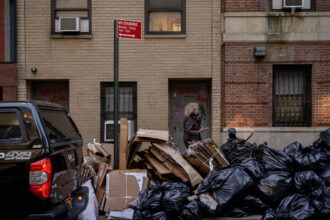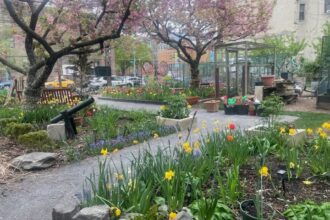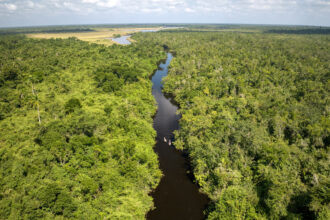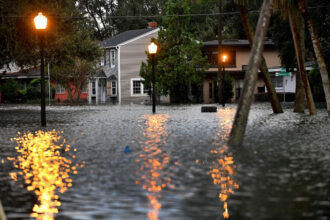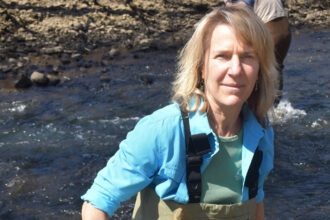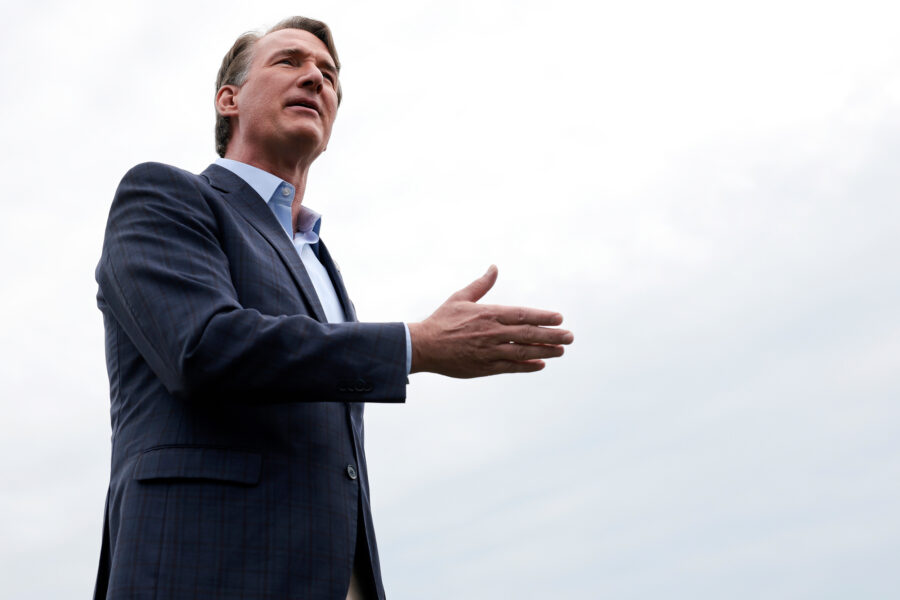New York City is poised for a year of opportunity with the opening of miles of city-wide greenways, a success for community advocates who are cautious but optimistic about the effort to create fresh or upgraded public paths across the boroughs.
Greenways are multi-use paths for walking, biking and electric-assisted transport, often situated along rivers and railways or in parks. In urban areas, they are meant to enhance the local landscape and offer safe travel ways protected from vehicle traffic.
There are some clear environmental benefits for communities. The obvious reduction of emission reduction aside, added foliage and landscaping can ward off summer heat, play a crucial role in stormwater management by reducing runoff and erosion, and encourage biodiversity in urban areas.
New York Mayor Eric Adams announced a plan to build more than 40 miles of greenways in the city’s outlying boroughs last fall, in addition to upgrades to 20 miles of existing greenways, after the city received $7.25 million through the U.S. Department of Transportation’s Rebuilding American Infrastructure with Sustainability and Equity grant program in August 2022.
The RAISE grant will plug gaps in some existing paths, including 16 miles in the Queens Waterfront route, 12 miles from Coney Island to Highland Park along the Historic Brooklyn Greenway, 10 miles from Goethals Bridge to the Verrazzano-Narrows Bridge in Staten Island, 15 miles in the South Bronx to SUNY Maritime College from Randall’s Island and seven miles from Spring Creek Park to Brookville Park in South Queens.
“This is a very notable year,” said Hunter Armstrong, the executive director of the nonprofit Brooklyn Greenways Initiative. “I don’t think there’s been a year like this, from a standpoint of greenways, and so much kind of focus and effort going into greenway planning.”
The New York City Department of Transportation plans for six “early action corridors”—including some funds for a seven-mile Harlem River Greenway in the Bronx—to be released roughly every six months. The early-action designation is a preliminary step to expand or evaluate pre-existing greenways before long-term planning begins.
Community advocates who for decades have sought a unified greenway network said the city’s support is a welcome development. Much of their challenge was plain geography: the jurisdictions for the various greenways are fragmented, with separate authorities overseeing each segment of the city’s 300 miles of paths. Involvement from the mayor’s office, they said, signifies a clear consolidation of responsibilities—and the potential for faster reaction and coordination.
EdMundo Martinez from the Bronx River Alliance, an environmental protection organization, said the federal funds helped to eliminate debate over who wants to make New York a greener city, he said. “It’s oftentimes: ‘Are the people in charge or the agencies in charge going to go forward with the promises that they made?’ Or sometimes like, ‘Hey, we want to do this,’ and they may not be as ambitious or motivated to do some stuff.”
The newly formed NYC Greenways Coalition and the Urban Land Institute released a report in December that highlighted the need for centralized public-sector leadership regarding sustainable development. The report calls for the creation of a city hall-level office or position, recognizing an “overall obligation” to develop city greenways.
Candace Damon, chairperson of the technical assistance panel responsible for the report, said an official with authority over all the agencies involved in developing greenways is critical. Otherwise, efforts get “scattered,” she said, as stakeholders are left to their “own devices.”
Martinez said his group, too, wants smoother coordination at the top. “DOT can only do so much, the Parks Department can only do so much,” Martinez said. “That’s where it requires elected officials, city council, mayors.”
In 2021, the Brooklyn Greenways Initiative organized other community groups to send a letter to New York’s two Democratic U.S. senators, Chuck Shumer and Kirsten Gillibrand, to appeal for funds from the Bipartisan Infrastructure Bill for greenway planning and construction. Months later, the Brooklyn Greenways Initiative organized the first NYC Greenways Summit in May 2022. The coalition now includes members from more than 45 environmental or community groups.
This story is funded by readers like you.
Our nonprofit newsroom provides award-winning climate coverage free of charge and advertising. We rely on donations from readers like you to keep going. Please donate now to support our work.
Donate NowMonths ago, the New York City Economic Development Corporation, a nonprofit that manages city property and advises the authorities on economic issues, issued a request for proposal for a consultant to develop a long-term plan for city-wide expansion of the greenways network. That selection is expected to be completed this summer.
Advocates said greenway proposals in other cities are often reviewed or conceived by teams made up of designers and engineers who work with community organizations. But the consultant choice is less important than deciding how the greenways process will evolve, the local organizers said.
Communities need to be at the heart of the next years of decision-making with the goal, they said, to ensure that expansion is coordinated and the communities well served.
“There are so many entities, principally city government, but not entirely city government, that have something to say about what an equitable greenway network should look like,” Damon said. “What matters is: once a team is picked to execute the work that’s described in the RFP, are other agencies at the table? Are their voices heard? Who’s the final decision maker?”







